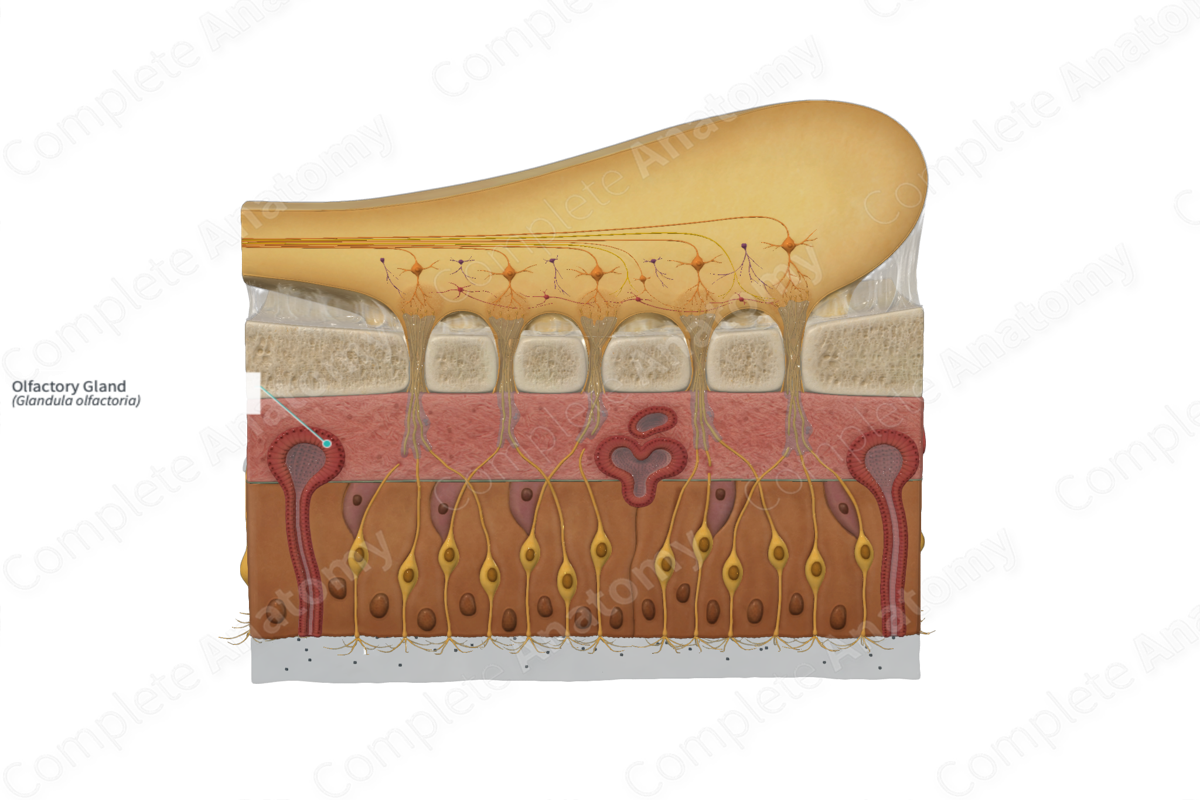
Quick Facts
Olfactory glands are small mucous glands in the olfactory mucosa (Dorland, 2011).
Structure and/or Key Features
The olfactory glands are branched tubuloalveolar glands situated in the lamina propria of the olfactory mucosa. The glands secrete a serous protein-rich fluid within its alveoli, which is then transported to the surface of the olfactory epithelium via ducts (Farbman et al., 1992).
The glandular secretions include lysozymes, lactoferrin, IgA, sulphated proteoglycans, metabolic enzymes (P-450, cytochrome enzymes), as well as odorant-binding proteins. Odorant binding proteins are vital in olfactory transduction and facilitating the sense of smell as they ensure effective odor identification (Standring, 2016).
The serous fluid produced by olfactory glands makes up a significant portion of the mucus layer that overlies the olfactory epithelium (Farbman et al., 1992).
Function
The olfactory gland secretions have several immune and defensive properties. The mucus serves as a filter for inhaled air, trapping irritants such as dust, smoke particles, bacteria, etc. The mucus also serves as a shield for the olfactory epithelium, protecting the layer from damage caused by drying, extremes of temperature, infectious organisms, and non-infectious particles (Farbman et al., 1992).
The mucus layer also serves as a solvent onto which odor molecules are dissolved. The odor molecules bind the odor-binding proteins in the mucus. Within this mucus medium, the odor binding proteins concentrate the odor molecules that are subsequently able to reach the high surface area made available by the olfactory cilia (Longstaff, 2005).
Clinical Correlates
—Anosmia
References
Dorland, W. (2011) Dorland's Illustrated Medical Dictionary. 32nd edn. Philadelphia, USA: Elsevier Saunders.
Farbman, A. I., Bard, J. B. L., Barlow, P. W. and Kirk, D. L. (1992) Cell Biology of Olfaction. Developmental and Cell Biology Series: Cambridge University Press.
Longstaff, A. (2005) Neuroscience. BIOS instant notes 2nd edition: Taylor & Francis.
Standring, S. (2016) Gray's Anatomy: The Anatomical Basis of Clinical Practice. Gray's Anatomy Series 41st edition: Elsevier Limited.
